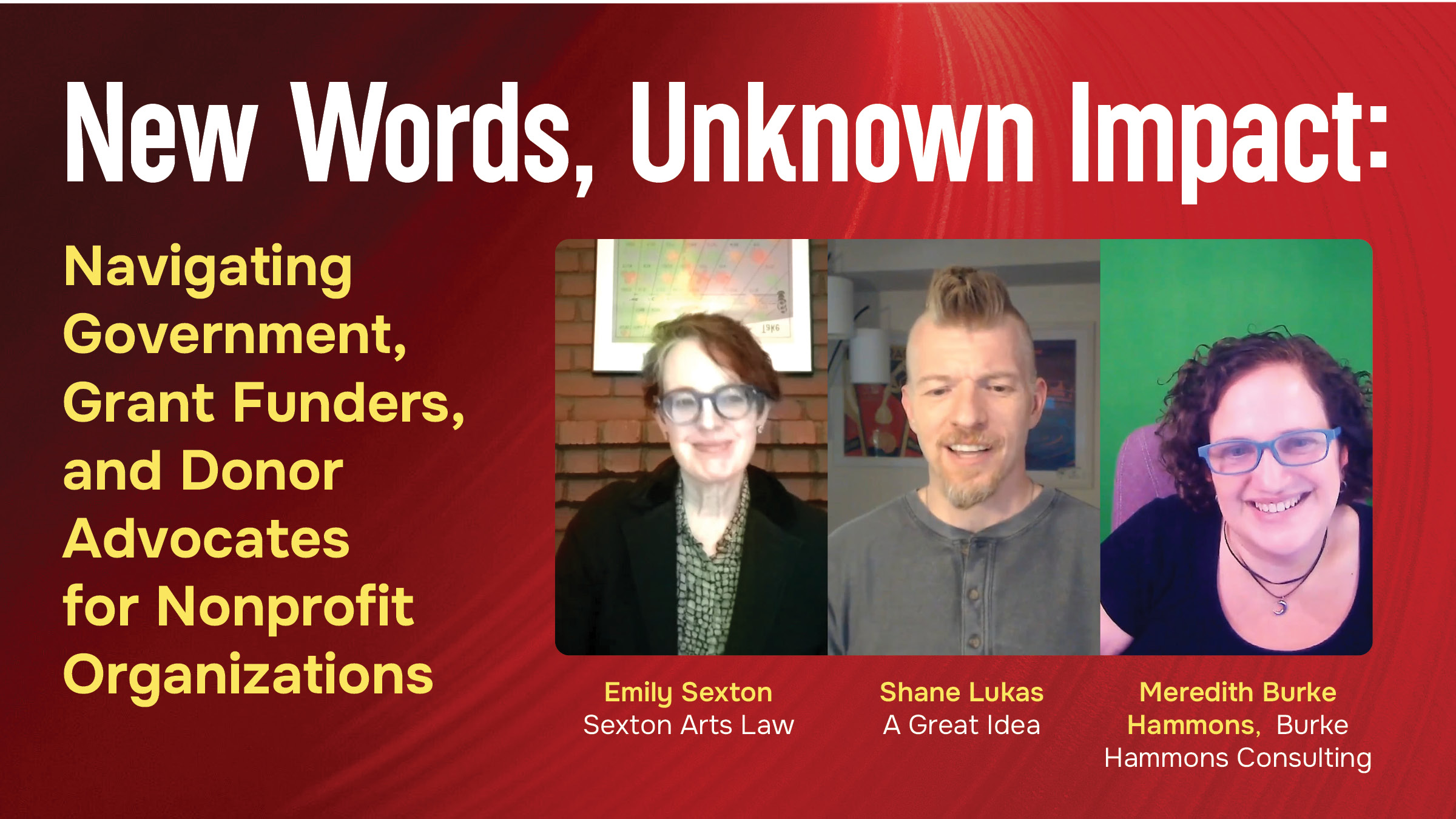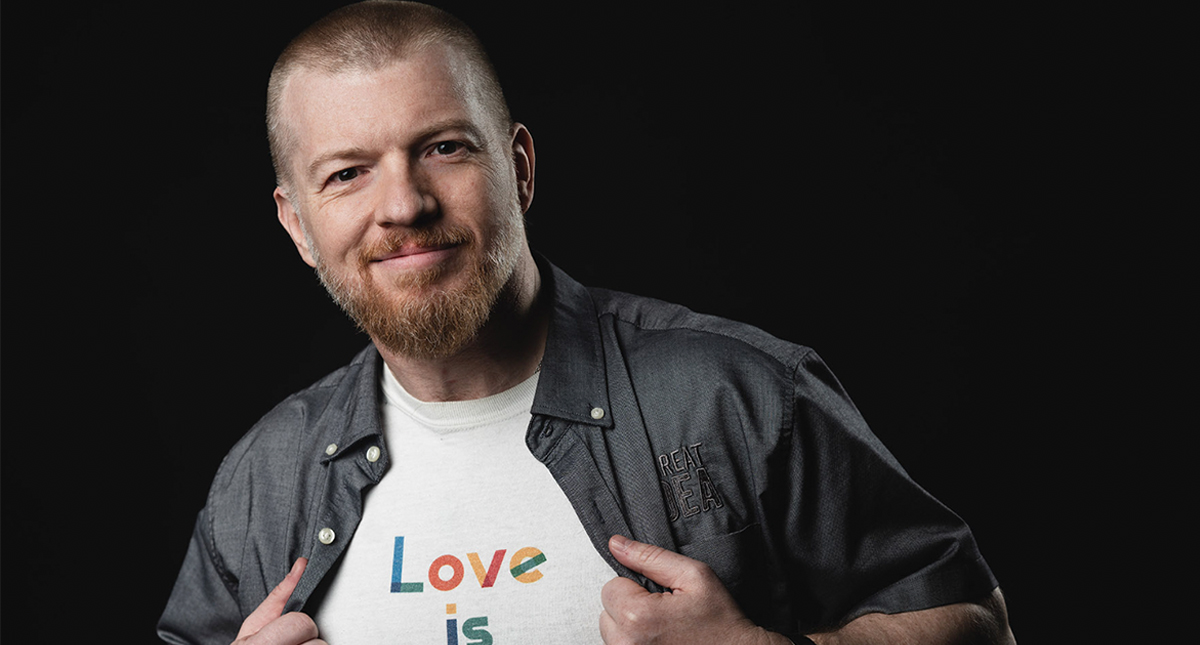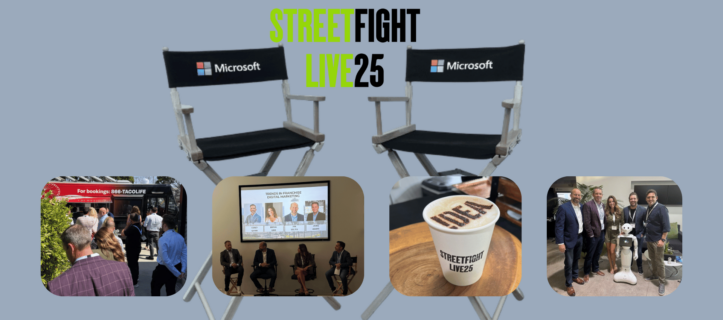Greatness Lives in Every Body: Meet Creative Artist and Designer Rachel Bennett
Philadelphia-based creative artist and designer Rachel Bennett sits down with A Great Idea team member J to talk queer creativity and the AGI value that inspired their original "Pride In Our Values" artwork
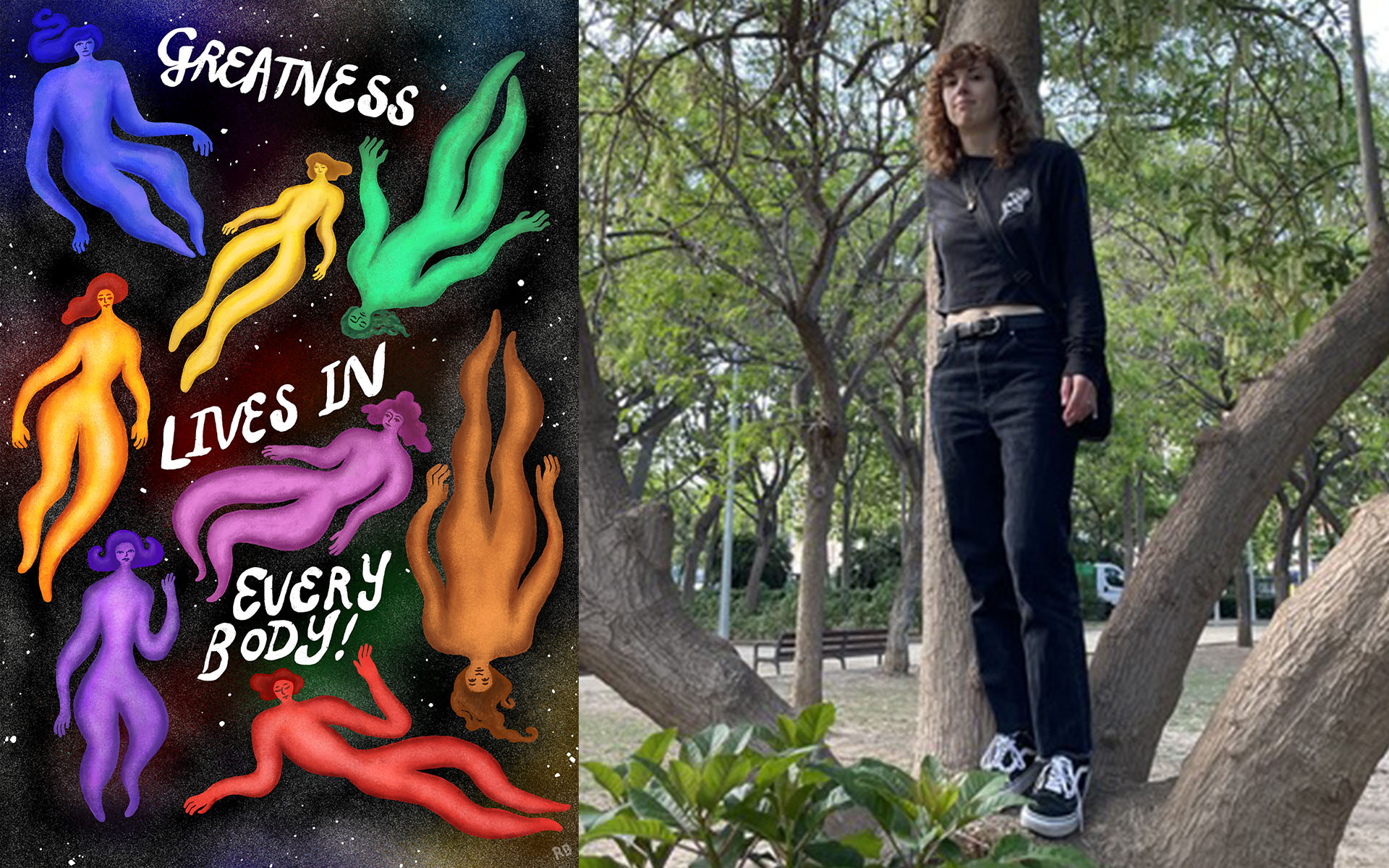
Rachel Bennett’s illustration of "Greatness Lives in Every Body" is part of a four-part series commissioned by A Great Idea for Pride 2025. This illustration series, by queer artists from across the US, is a visual representation of AGI’s four core values that guide our year-round commitment to community-centered, mission-led, equity-driven storytelling that is inclusive of all lived experiences and expressions. As a proudly LGBTQ+-owned agency, we wanted to invite visual storytellers to join us as elevate their work and celebrate the power of queer creativity. Learn more about this initiative here.
Do you have anything you would like to preface this interview with? Or do you want to just go into the questions?
I was excited for the opportunity. I had seen Shane's post on the Queer Design Club Slack and it seemed like a fun project to work on and a way to be involved in Pride via art. It seemed like a fun, creative project that would give me a break from less creative projects. It was a really fun project to work on!
Can you tell me how you self-describe as an artist and designer?
I've always thought of myself as a creative artist type. I’ve always loved drawing from the age of three or four and I've carried that through my life and also developed it into a design career. It's definitely a big part of how I see myself and it's a way that I've found to be able to express my feelings—like a therapeutic thing. Even if I'm making something just for myself, it can be a way to relieve anxiety and stress, so I've always wanted to prioritize that in my life. Even as in my career I do more design-side computer work—pushing pixels, that type of thing—it's nice to have something that feels more like it's just for me.
With this beautiful piece you created for AGI—“Greatness Lives in Every Body”—can you talk to me a little bit about what your thoughts going into it, your process creating this? What sorts of things were you pulling from?
This was actually the first digital piece that I've done in this style. It's a newer style that I've been developing prior to this—mainly through watercolor pieces. The idea behind it—because one of the pieces that I had done that is in a similar vein, I made for an LGBTQ art showcase—I wanted it to be a representation of the queer community. I made the figures intentionally kind of androgynous, a little bit nebulous, and not focusing too much on defining features, because I sort of view the LGBTQ spectrum in that way: there is no one type of person and there is no one way to define LGBTQ identities. I wanted to create something that anyone could see themselves in, without it being defined by biological sex or race or socioeconomic differences: something that speaks more to primal human elements.
Going into creating a piece like this—or just generally—what would you say your biggest influences or inspirations are?
That's a great question! Keith Haring is a big inspiration for me. I'm actually wearing—you probably can't see. But I’m wearing a Keith Haring shirt. Matisse—I also love the way that he captures the human form—and I draw a lot from the past and the present as a designer. I'm always looking at illustration trends and how that's evolving. My inspiration is a mixture of those past and present elements.
That's really beautiful! So, you touched on this a little bit already—especially talking about, you know, starting as an artist, as a three year or four year old—but what brought you to art and to illustration like this?
It always was a comforting thing for me, and it was a way that I could be with myself and enjoy time spent with myself. Growing up, I had a lot of alone time. I have 2 younger siblings, but one of them is much younger, so we didn't exactly grow up together, and then the other one, we didn't always get along. I would be left to my own devices a lot, so art was a way for me to express myself and have a healthy outlet for expression.
What communities do you consider yourself a part of? And how does that influence your work?
Throughout my life, I have been, in various capacities, part of different communities. I never necessarily saw myself as strictly belonging to one community because there's a lot of different aspects of my life and different interests that sometimes converge and sometimes don't. I would say I consider myself part of the LGBTQ community. Another thing that is a big aspect of my life is running, so I'm involved in some running communities. And the design community. I also work in the arts for a nonprofit, so I feel like I float between all these different worlds, in a way, depending on what the situation is.
Totally, yeah! Do you feel like the design work that you do influences your art much or vice versa? If so, how?
Yeah, I think so! It's interesting, because my approach to design, I would say, is from a problem-solving mindset: needing to take specific content and purpose it to a specific output. Illustration and art is a lot more free-form: there doesn't need to be a specific reason or a specific meaning. I like that people can take different meanings from a piece of art based on their experiences and their perspective and where they are in their life at that moment. There's that ambiguity to it. There can be multiple interpretations to a piece of art, and I think that does not detract from the value of it. There is a lot of crossover, but I think with illustration and art, it's a way to have fun creatively and just take away the parameters that you typically would have with design work.
When you are doing art and illustration, do you feel like you're trying to accomplish anything, either on a grand scale or a smaller scale with your art?
It really depends on the piece and it depends on my mood at the time. Sometimes it's like there's something in my head and I just want to get it on paper. Sometimes I'll have a more specific purpose for it. And sometimes I'll use art almost as a way to direct energy in a certain direction—almost like a sigil or something like that. For my own capacity or goal there or whatever I'm thinking about at that time, just using art as a vehicle to put energy out into the world.
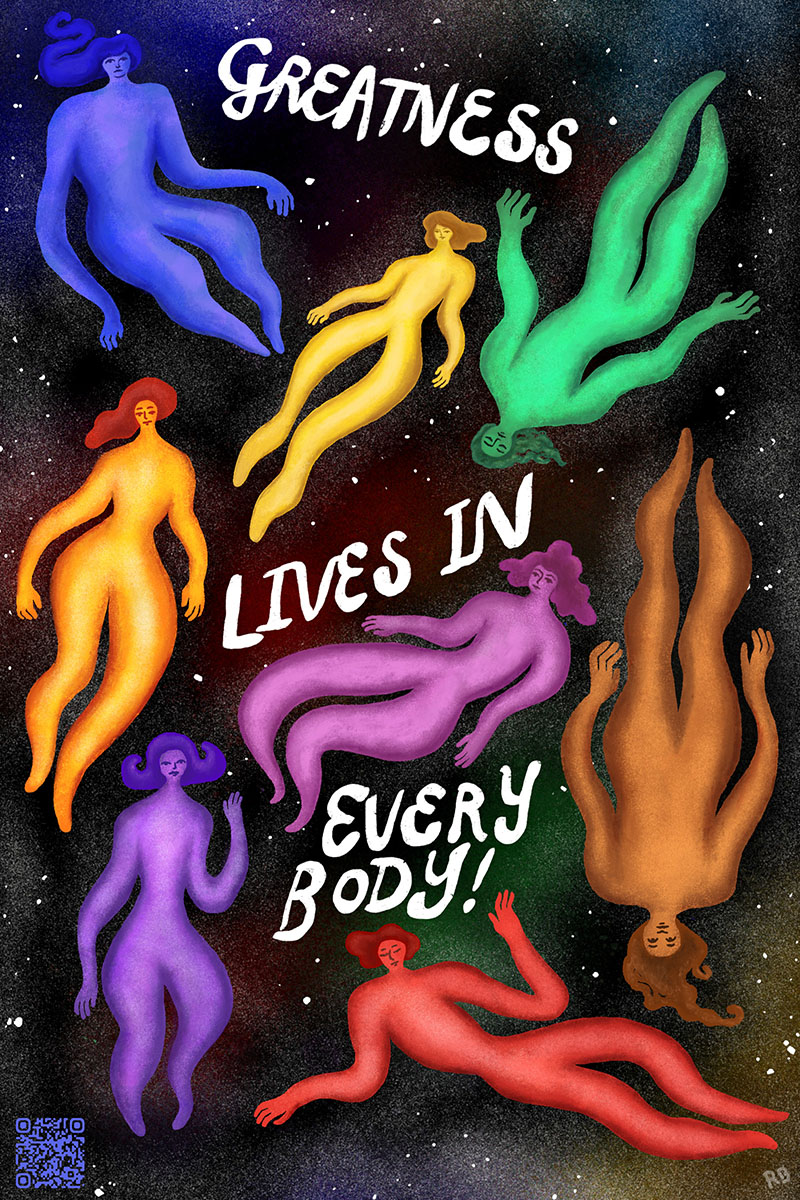
Earlier, in the very beginning of our conversation, you mentioned seeing the call for artists and wanting to participate. Can you tell me about what interested you?
I've kind of had somewhat of a strange journey as far as finding identity and finding my place in the LGBTQ spectrum and exploring that a bit later in life than some people may be doing. I definitely have noticed the cultural shift between Millennials growing up versus Gen Z. Even in that short amount of time, I feel like the culture and the language has changed so much. Growing up, I did kind of have that awareness of myself on some level but it also just wasn't something that was talked about. I didn't really know many queer people in my life. I had a few friends, but I didn't know of any adults that identified that way.
I grew up in a fairly homogeneous community, even though we were adjacent to a metropolitan area that did have a lot of diversity. But it definitely felt like a completely different world. So my journey through this has been more roundabout, or just less of a straight line. Anyway, where I am now, I'm in a straight-presenting relationship—marriage—so there is kind of some difficulty in that and just not really knowing where I fit in. Not really knowing how people will view me or if they feel that I do have a place in the community. It's been this internal friction point that I've had to grapple with. But to answer your question: I think I do try to look for ways to stay connected to that part of myself and find ways to contribute to the community through my specific form of expression.
Totally! That makes a lot of sense to me. As an artist in today's world, there's so many things that can make art either difficult or just complicated—professionally, personally, with AI, the need to work, other things. In your personal practice, what sort of challenges do you face?
I have such mixed feelings about AI. I think a lot of people do—partially because there's a lot we don't really know about it at this point, and, where we are now, it feels like Pandora's box has opened. Now we're living in a new reality. With any new tool, there is always going to be fear—especially at the rate that it's accelerating and developing. There's definitely fear of the unknown: not knowing how it’s going to affect you personally, not knowing how it’s going to affect whatever industry you might be in. I do hope that there is more of an effort to set guidelines for proper usage and ethics around how we're using AI and in what contexts. What rights do people have to have their work commodified through these large language models? But I personally don’t have experience in legislation and all of the mechanisms that would be required to put that in place, so I don't really know how we can approach that. How do we set guidelines around it? I hope that there continues to be more of a conversation around it. From my perspective, as far as how I interact with AI, I think there are useful applications for it. From a design perspective and also from an artistic perspective,—just anecdotally—I've used Midjourney to basically generate reference images for illustrations. It's been great for things like that because we were limited: if you want a reference photo, you either take the photo yourself or you try to find the closest approximation of that on Google—which has a lot of limitations. This is a way to bridge that gap and use it as a tool to help you arrive at a solution more quickly. There are definitely useful applications for it. But at the same time, part of me is very apprehensive about the future of AI, and how much it fits into our work culture and our culture in general.
I was excited that we are actually commissioning illustrations and continuing to interact with real people, creating real things in real art and real songs and stuff, because, as uptake of AI increases, it's nice to be on the human side of these things. I wanted to give space to talk about that or maybe for you to talk about your own stance, or talk about how things impacting your art.
Definitely. That's another takeaway that I've had from AI is that I hope that there is more of an emphasis or value on human authenticity that cannot be replicated by AI. However much these models advance, I don't think that's something that can be replaced. As artists and as designers, I hope that value starts to be more recognized.
Well, speaking of values, how does the art that you create communicate your values?
I hope that people are able to look at my art and see themselves in it or see some version of themselves reflected back. Or that by illustrating a feeling, I can give people the ability to see the world in a way that they may not think of it. I don't always have a political slant to my work. Sometimes there will be more of a concrete message, but I think overall, it's really just to help people have a better feeling about the world in general, because there's a lot of negative things that are constantly coming at us and things that we don't always feel that we can control. I want to put something out there that people can have a positive feeling about, I hope.
So what does the value ‘Greatness Lives in Every Body,’ which is the value that you illustrated, mean to you? And how does that show up in your life or in the work that you do?
It's funny, because over the years, I’ve been on various social media platforms. I was very into Tumblr when that was big and, there, I definitely saw a lot of glamorizing disordered eating, and emphasizing a certain type of ‘look.’ That is, in large part, people's interpretations of the media that they are presented with. Through various social media platforms, I've seen an evolution of that mindset and people pushing that type of lifestyle—sort of driving people to put unnecessary restrictions on themselves. I definitely grew up with a lot of that type of mindset and toxic diet culture and I've definitely tried to, within myself, have more of a positive view of dieting and exercise and things like that. Running has always been like a big part of my life and because of what that has given me, I want us to all live in a world where people can feel good about their bodies. Not just in a sense of how it looks or how you present, but finding some way to feel comfortable and feel good about your body. Being able to move in a way that feels good to you. I want there to be more of an emphasis on what your body can do for you, more so than how it appears to other people. There could be a lot of empowerment in shifting the mindset away from “XYZ thing about my appearance is a problem” and turning it into “Look at all the things that my body can do and the places that it's brought me.” Just thinking about it not necessarily on a utilitarian or aesthetic level, but on a practical level.
Like seeing the wonderful things your body can do, and seeing it as part of the same team as you.
Yeah! There's just so many negative messages in the media that cause people to not feel good about the way that they look. And I think that is very deliberate. It's very manipulative and predatory—especially to people who do not fit into that accepted category.
I wanted to ask you earlier. But I wasn't sure, if it was like an oddball question—and it might be—but I want to ask anyway: do you feel like your running practice impacts your art?
I definitely view everything as connected in some way. I think of running as a way of expressing myself and a way of being present in my body. It's definitely been a way for me to have more of a mental balance in a similar way that I think art does for me. In both cases, it's almost a way of removing a lot of pretenses about identity and presentation, and how people are viewing you or categorizing you or judging you. It's a moment to not have to focus on that and just be focus on being in the moment and enjoying what you're doing.
Learn more about Rachel Bennett's work here.
A Great Idea will be sharing the illustrations and behind-the-scenes interviews from each artist across our platforms throughout Pride season. Follow along on Instagram and visit agreatidea.com and check out the full series. Let’s do great things together!


